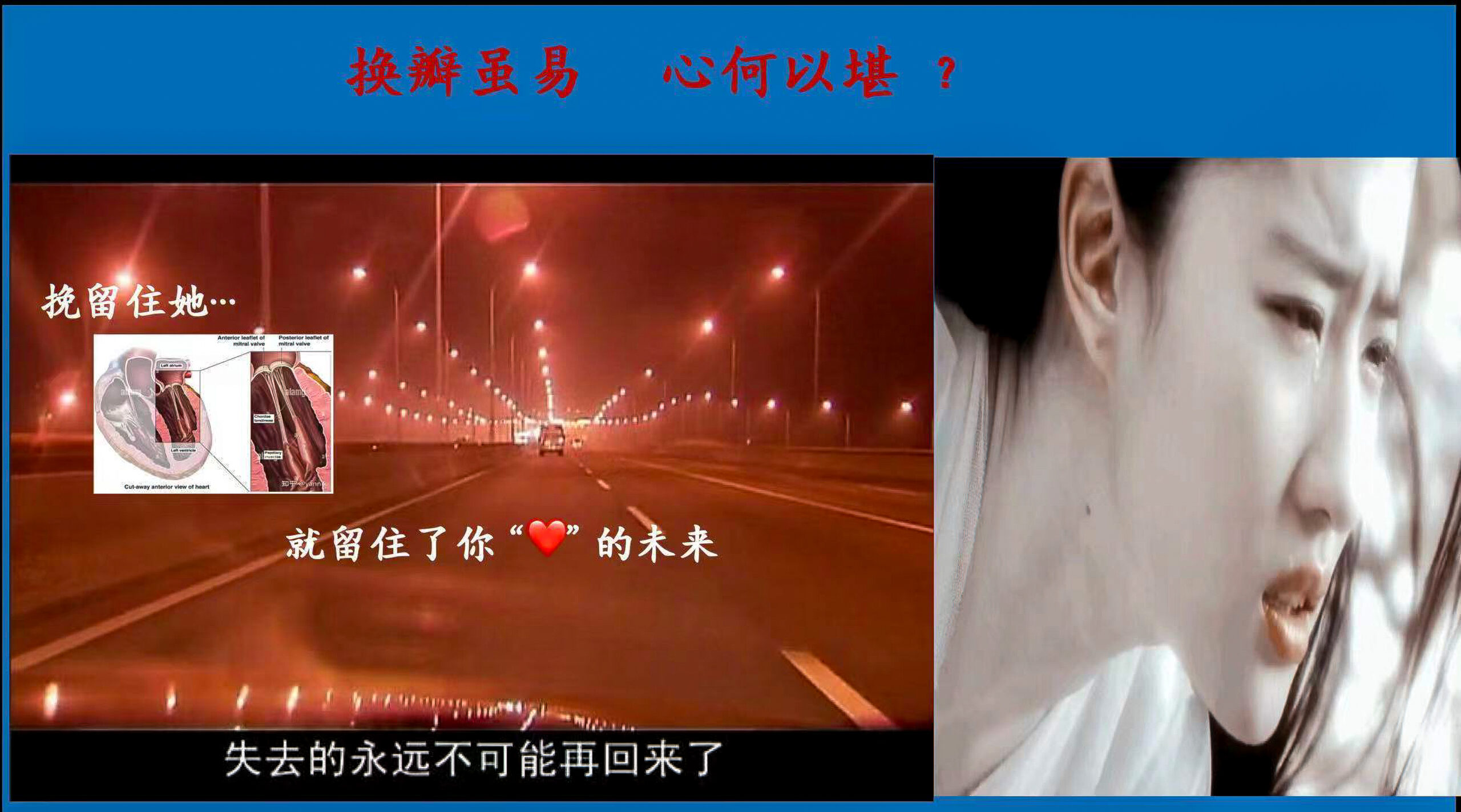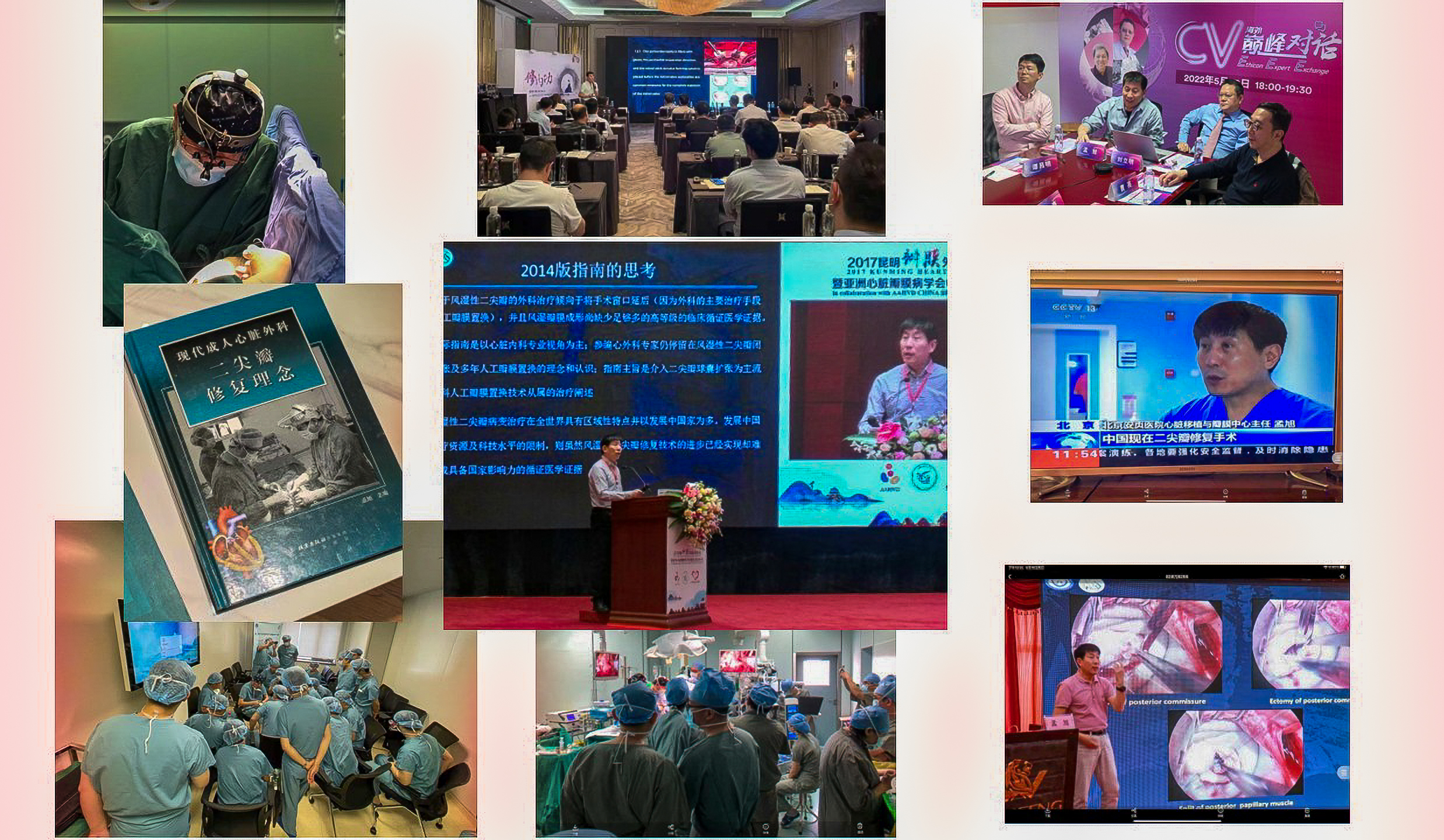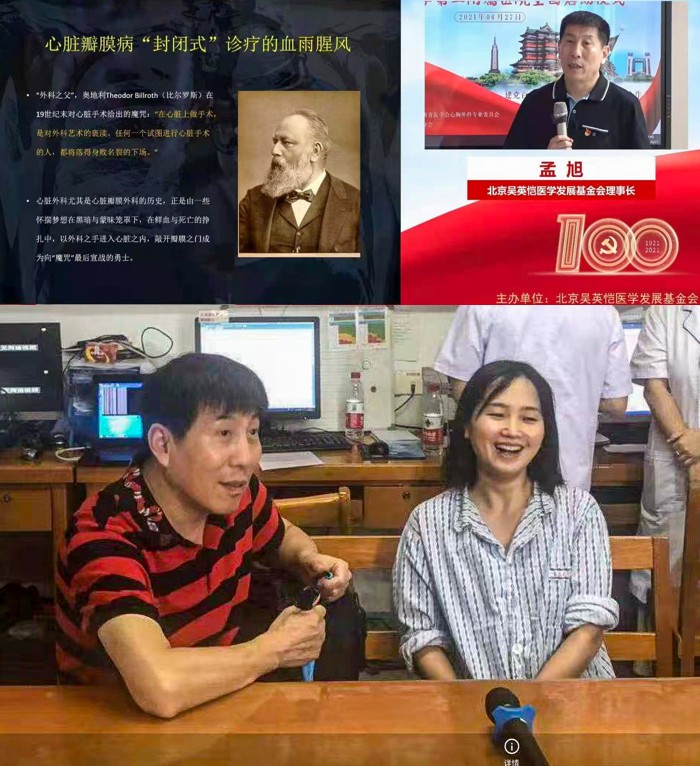Author note: This piece is based on a series of conversations with Dr. Meng Xu, one of China’s leading cardiac surgeons. His voice, vision, and uncompromising devotion to valve repair inspired every word. Though he prefers to remain out of the byline, his story is the one being told.
It was 11:48 p.m. on August 14, 2021, China’s Qixi Festival, a day for lovers and a celebration of craftsmanship. I posted a photo of my phone’s lock screen to WeChat Moments. The screen read, in neon font: “I chose this road myself; even if I must crawl, I will finish it.” These are not borrowed words, but my own. A little melodramatic, perhaps, but effective. Before every surgery, I look at it. It reminds me: This path is mine. I will not give up halfway. I’m a heart surgeon, and for over two decades, I’ve focused on repairing the mitral valve, the flap-like gateway between the heart’s upper and lower chambers on the left side. All these years, I’ve tried to convince those around me (patients, colleagues, and the entire medical system) that a damaged valve doesn’t always need to be replaced. It can be repaired. It should be repaired. And it deserves to last a lifetime. Some call me stingy. I say I’m scrupulous. The sound of life, the lub-dub that marks our heartbeat, is made by our heart valves opening and closing. To me, a valve isn’t a replaceable part. It’s part of a human being. I guard it as if it were sacred, a gate of life, a channel through which the heart speaks to heaven and earth.

A moment ten years ago struck me hard and has stayed with me ever since. A nineteen-year-old girl had been diagnosed with rheumatic mitral valve disease. Her family was poor, and a friend brought me her scans. I knew I could save her valve and protect her future. No lifelong anticoagulants. No cold ticking in her chest, like a metronome counting down her days. No fear that a stumble on the stairs might turn into a medical emergency. I told her: make the journey at your own expense, and I will perform the surgery for free. But before I could schedule it, another hospital stepped in. They promised to cover all her hospitalization costs, and then replaced her valve with a mechanical one. She survived. But now, she will live the rest of her life with a foreign device inside her, bearing all the risks and sacrifices that come with it.

That day, it struck me with sudden clarity: Rheumatic disease, this beast, still the world’s leading cause of damaged heart valves, is the true enemy of a man stingy with the gates of life. And what I was facing wasn’t just another fight. It was a war against a system cloaked in tradition, bound by outdated beliefs, yet still parading as righteous. A war that demands endurance. A war that calls for solitude, for rejection, for crawling, even for kneeling. A war I must fight, even if I have to fight it alone. Pascal once said: “The soul has two doors: reason and will.” The prevailing practice is replacement. It’s faster and easier to teach. It fits the system: guidelines, devices, reimbursements. Most surgeons in China, and around the world, default to replacement. It’s what they were trained to do. It’s what gets paid. It works. But reason is something else. And reason demanded proof.
The data was unequivocal. Compared to replacement, mitral valve repair offered superior safety, durability, and long-term outcomes.
- Lower operative mortality risk: A 2.6 times lower risk.
- Improved long-term survival: Nearly 40 percent better 10-year survival.
- Fewer adverse events: Three times fewer major long-term adverse events like bleeding or thromboembolism.
- High repairability rate: Over 70 percent of rheumatic mitral valves are repairable.
- Reduced mortality: A 75 percent reduction in seven-year mortality.
But still, most chose replacement. I thought reason would be enough. I thought numbers would change the system. But reason opens no doors. Not unless will is ready to walk through.
A woman from Qingdao once sought me out. She had done all her research, traveled across China, even to Johns Hopkins in the U.S. Every doctor said: “not repairable.” Finally, she found me but couldn’t get an appointment. She wrote me a letter. By the time I saw it and reached out, she had gone to Thailand. A doctor there fixed her valve. She trusted me but couldn’t reach me. I had the skill. I had the plan. She had the desire. But the system failed her. That day, I didn’t just lose a patient. I lost a piece of the future I was trying to build. If even she, who did everything right, was left behind, how many others would be? That loss was a turning point. It was no longer enough to be the lone expert; the knowledge had to be shared. So, I took the techniques I had honed in silence and gave them form, language, and structure; it was something not just to perform but to teach. We called it SCORE: a system built on four core moves (Shaving, Checking, Commissurotomy, and Relaxing) with Extension as an optional fifth step, making the impossible teachable.
- Shaving: Removing diseased tissue and thinning thickened leaflets.
- Checking: Inspecting and confirming the commissures.
- Commissurotomy: Incising fused commissures.
- Relaxing: Releasing restricted chordae.
- Extension: Annulus or leaflet reconstruction and augmentation as needed.
Each step a craft, each craft a chance to save what others would discard. I hit the road. Hospitals big and small. Live demos. One-on-one training. I carried my handbook like a bible. Not just to show how. To show why. With the Wu Yingkai Medical Foundation’s support, I trained over a hundred hospitals, performing four or five surgeries a day, just for the eyes behind the glass. I wasn’t just a surgeon anymore. I was a missionary.

People ask: The degenerative valve repairs you’ve championed for years are now widely accepted. You could have stopped there (job well done, legacy secured). So why take on rheumatic valve repair, the hardest bone most surgeons shy away from? Honestly, I’m not entirely sure. Maybe it’s because repair demands more finesse, like sculpting with your bare hands. Maybe replacement feels too much like surrender. Or maybe it’s just who I am: stubborn to the core. They call me stingy. I call it precision. To me, if something’s still alive, it deserves a chance, not the trash. I grew up reading Dream of the Red Chamber, Water Margin, and Romance of the Three Kingdoms. As a kid, I didn’t want to be Jia Baoyu, drifting through poetry, tears, and tangled love. I wanted to be Zhuge Liang, who was not a fighter but a strategist. Or Song Jiang, who was loyal, conflicted, and always choosing the hard road. In the end, I became who I am, a headstrong surgeon with little patience for politics or pretense. I didn’t move fast, but I stayed true.
Ten years ago, I was inducted into the American Association for Thoracic Surgery, one of the highest honors in my field. I didn’t wear a tie. In the group photo with other new members, I joked I looked more like a fugitive than a scholar. That’s me. The odd one out. The one cracking jokes on the edge of the system while quietly trying to change it.
In 2025, after over a decade of SCORE, something happened. Joel Dunning, editor-in-chief of CTSNet, the world’s top cardiothoracic surgery platform, watched a video of one of our rheumatic mitral valve repairs. “This is phenomenal,” he said. “Absolutely incredible, a brilliant repair. I was literally transfixed.” He continued, “This could well sweep the world if taken on. That would be game-changing.” For a guy whose English is somewhere between “miserable” and “barely passable,” that felt overwhelming. For once, I didn’t have to knock on the door. Someone opened it.
Over the years, I’ve done two of the hardest things I know: saving valves whenever possible and planting an idea in someone else’s head. I don’t swim much anymore. Don’t play bridge. Don’t take vacations. Sometimes I watch a show, but only if it stars someone flawed and stubborn, someone who keeps doing the right thing, even when no one’s watching. That’s how I see myself. Not a hero. Just someone who refuses to exit stage left. Sometimes I wonder if I’m still choosing this road or if it’s chosen me. But my lock screen still says it: “The path you choose; you finish it, even if you’re crawling.” These days, I crawl less. But I still carry a laptop in my bag, and hope in my chest: that one more surgeon will ask, “Can I learn?”; that one more patient will ask, “Can you fix it?” I’m not here to be known. I’m here to guard the gate.
This year’s Qixi Festival has passed, but the vow still burns. Around Qixi, I was at Qingdao Municipal Hospital, performing four mitral valve repair surgeries for rheumatic patients and training their chief surgeon and other doctors. From Henan to Guangdong, from Hubei to Zhejiang, the fire is spreading. And I’m still carrying the flame. Four years ago, on Qixi night, I made myself a promise: “The path you choose; you finish it, even if you’re crawling.” I’m still here to guard the gate. And as long as I still can, I will keep being stingy. Stingy with valves, preserving lives.

Narration by Alan Philip Ormond.
Xiang Xie is a writer and former physician.

















![Preventing physician burnout before it begins in med school [PODCAST]](https://kevinmd.com/wp-content/uploads/The-Podcast-by-KevinMD-WideScreen-3000-px-4-190x100.jpg)




